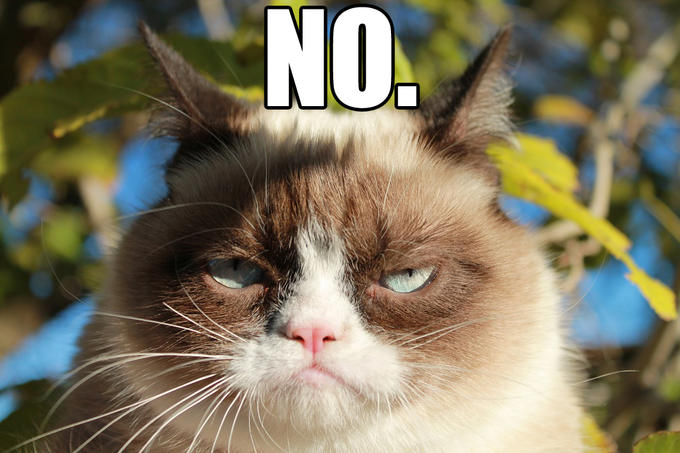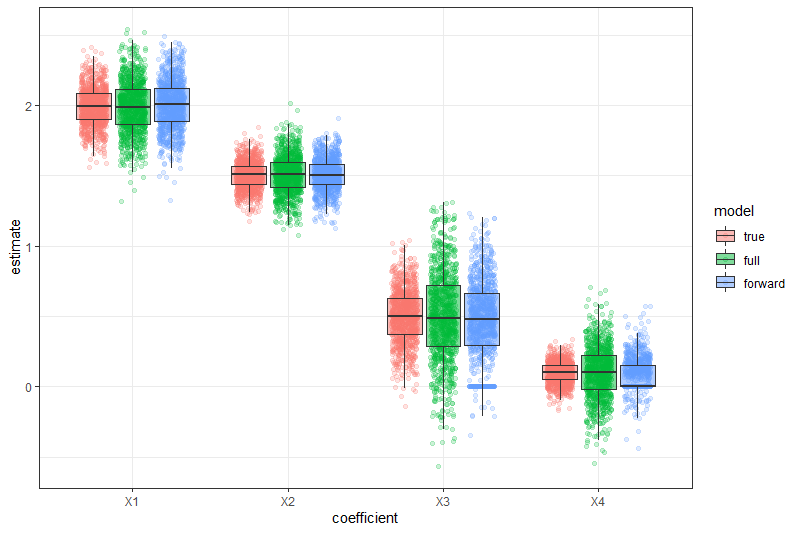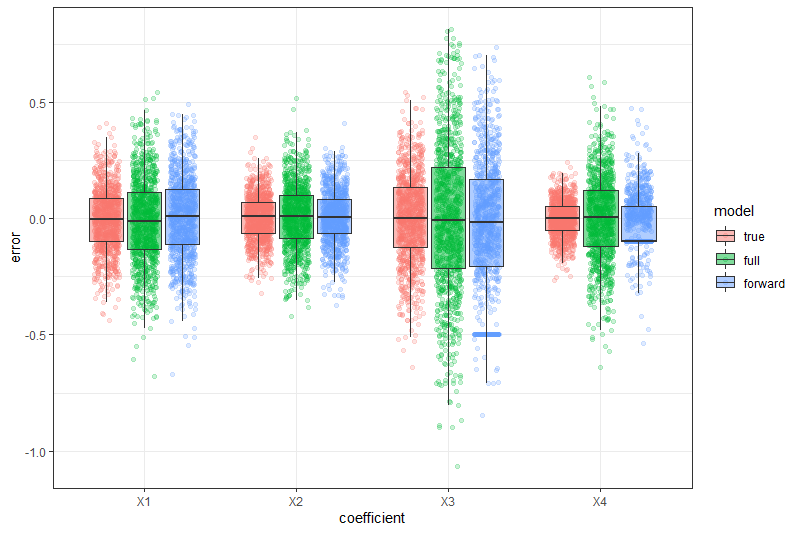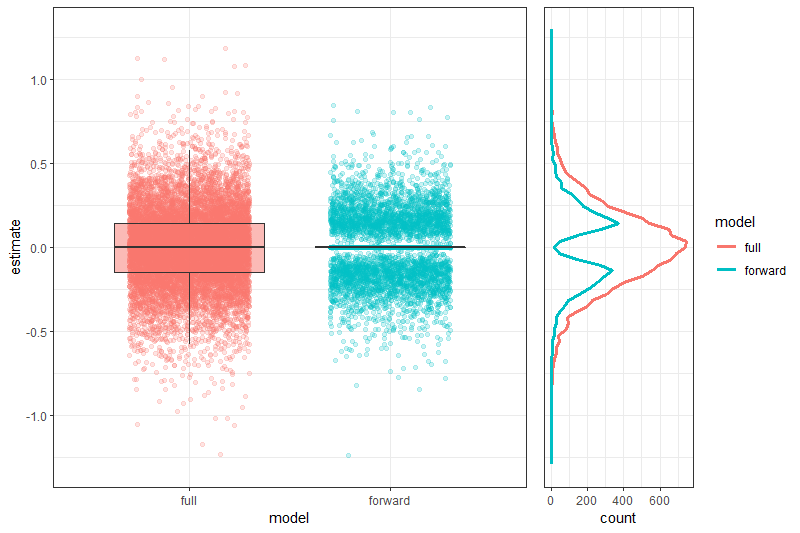Like Cats and Dogs
Why model selection and inference just can’t get along
Peter Humburg
18 February 2021
Model Selection and Inference

The Situation
- Research studies often collect data on many variables
- Can’t include all of them in analysis
- too many
- collinearity
- Need to select subset of variables
- Backward selection
- Penalized regression
- …
- Want to interpret resulting model to answer research questions
The Problem
Standard statistical inferences are often carried out based on a model that is determined by a data-driven selection criterion. Such procedures, however, are both logically unsound and practically misleading.

A Closer Look
What is the effect of model selection on coefficient estimates?

Setup
Simulate some data!
| Variable | True Coefficient |
|---|---|
| X1 | 2 |
| X2 | 1.5 |
| X3 | 0.5 |
| X4 | 0.1 |
| X5 - X15 | 0 |
- Sample size: 20
- Generate 1000 datasets
- Fit three models
- True model
- Full model
- Forward selection model
Simulation Results
What to expect?
- Coefficients for X1 - X4 should be close to true values
- Remaining coefficients should be close to 0
- How often a coefficient was significant tells us about Type I and Type II error rates
Estimates

Estimates

Power
| X | true | full | forward |
|---|---|---|---|
| X1 | 1 | 1 | 1 |
| X2 | 1 | 1 | 1 |
| X3 | 0.704 | 0.248 | 0.727 |
| X4 | 0.217 | 0.07 | 0.29 |
- Power to detect X3 and X4 is low
- especially for full model
Estimates for 0 coefficients

Type I error
| X | full | forward |
|---|---|---|
| X5 | 0.049 | 0.162 |
| X6 | 0.062 | 0.187 |
| X7 | 0.054 | 0.16 |
| X8 | 0.047 | 0.171 |
| X9 | 0.043 | 0.167 |
| X10 | 0.059 | 0.16 |
| X11 | 0.05 | 0.168 |
| X12 | 0.06 | 0.17 |
| X13 | 0.071 | 0.201 |
| X14 | 0.06 | 0.17 |
| X15 | 0.05 | 0.185 |
- Inflated Type I error
- Forward selection: 3 - 4\(\times\) nominal level
- Model selection is likely to include variables without real effect
- Interpreting these coefficients may be misleading!
Can we make it work?

What are our options?
- Choose model before looking at data
- Split dataset
- Select variables without looking at response
- Can help to deal with collinearity (VIF)
- Adjust p-values to account for effect of model selection
- e.g. R package
selectiveInference
- e.g. R package
How does adjusting for model selection affect Type I and Type II error?
Type I Error
| X | full | forward | forward adjusted |
|---|---|---|---|
| X5 | 0.049 | 0.162 | 0.017 |
| X6 | 0.062 | 0.187 | 0.026 |
| X7 | 0.054 | 0.16 | 0.016 |
| X8 | 0.047 | 0.171 | 0.018 |
| X9 | 0.043 | 0.167 | 0.023 |
| X10 | 0.059 | 0.16 | 0.031 |
| X11 | 0.05 | 0.168 | 0.016 |
| X12 | 0.06 | 0.17 | 0.026 |
| X13 | 0.071 | 0.201 | 0.018 |
| X14 | 0.06 | 0.17 | 0.018 |
| X15 | 0.05 | 0.185 | 0.016 |
- Marked reduction in Type I error
- Adjustment may be too conservative
Power
| X | true | full | forward | forward adjusted |
|---|---|---|---|---|
| X1 | 1 | 1 | 1 | 0.868 |
| X2 | 1 | 1 | 1 | 0.922 |
| X3 | 0.704 | 0.248 | 0.727 | 0.232 |
| X4 | 0.217 | 0.07 | 0.29 | 0.048 |
- Clear reduction in power
- Larger sample size required
- Need to consider model selection when planning a study to ensure adequate power
